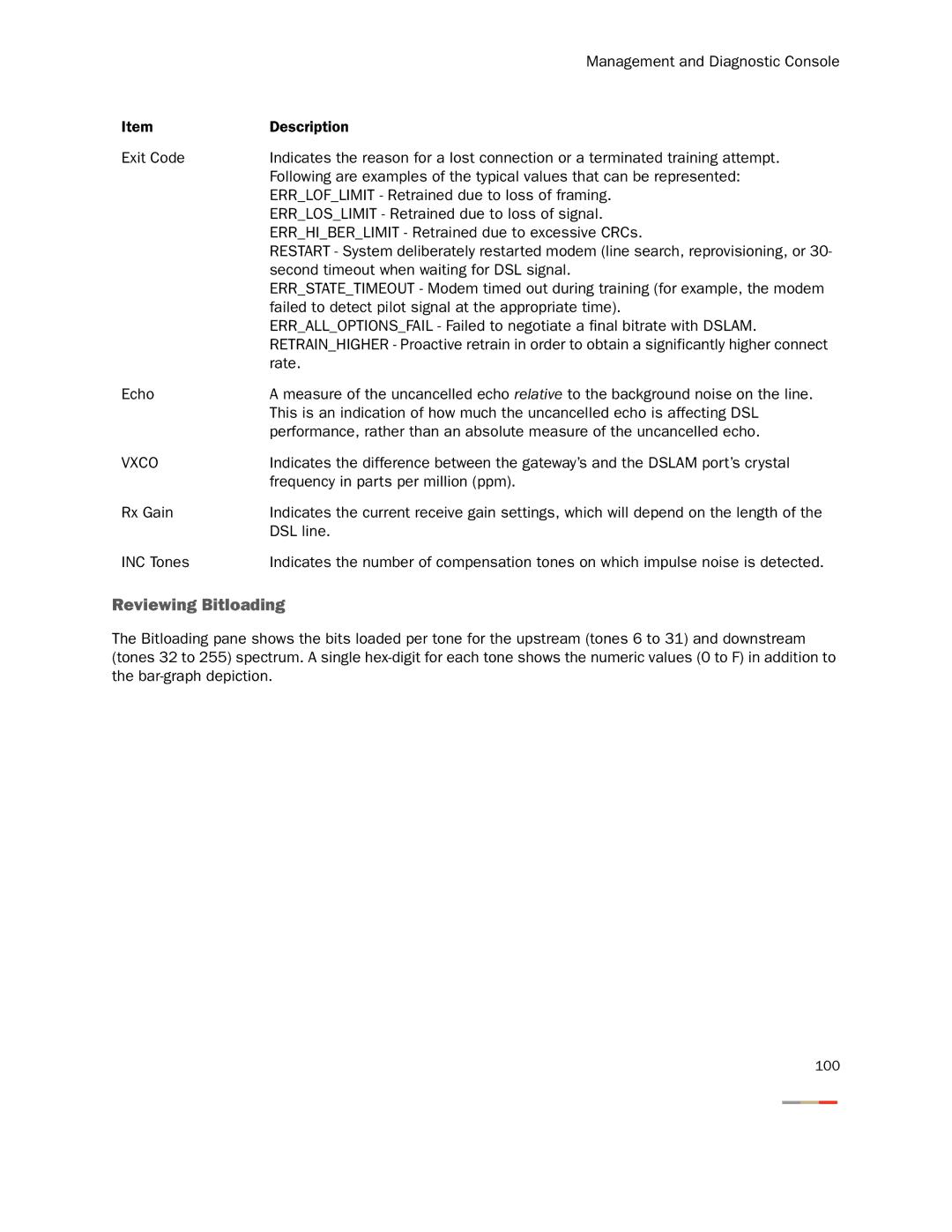| Management and Diagnostic Console |
Item | Description |
Exit Code | Indicates the reason for a lost connection or a terminated training attempt. |
| Following are examples of the typical values that can be represented: |
| ERR_LOF_LIMIT - Retrained due to loss of framing. |
| ERR_LOS_LIMIT - Retrained due to loss of signal. |
| ERR_HI_BER_LIMIT - Retrained due to excessive CRCs. |
| RESTART - System deliberately restarted modem (line search, reprovisioning, or 30- |
| second timeout when waiting for DSL signal. |
| ERR_STATE_TIMEOUT - Modem timed out during training (for example, the modem |
| failed to detect pilot signal at the appropriate time). |
| ERR_ALL_OPTIONS_FAIL - Failed to negotiate a final bitrate with DSLAM. |
| RETRAIN_HIGHER - Proactive retrain in order to obtain a significantly higher connect |
| rate. |
Echo | A measure of the uncancelled echo relative to the background noise on the line. |
| This is an indication of how much the uncancelled echo is affecting DSL |
| performance, rather than an absolute measure of the uncancelled echo. |
VXCO | Indicates the difference between the gateway’s and the DSLAM port’s crystal |
| frequency in parts per million (ppm). |
Rx Gain | Indicates the current receive gain settings, which will depend on the length of the |
| DSL line. |
INC Tones | Indicates the number of compensation tones on which impulse noise is detected. |
Reviewing Bitloading
The Bitloading pane shows the bits loaded per tone for the upstream (tones 6 to 31) and downstream (tones 32 to 255) spectrum. A single
100
